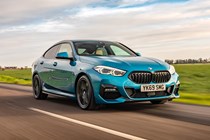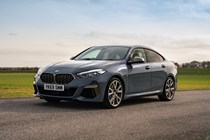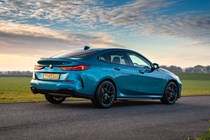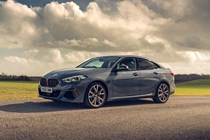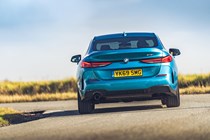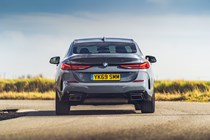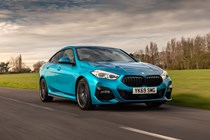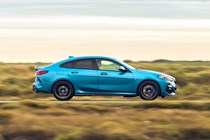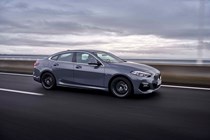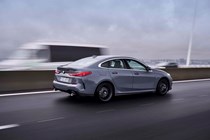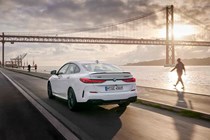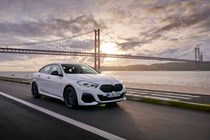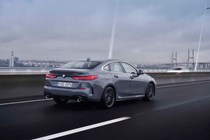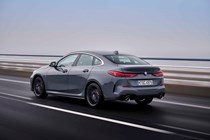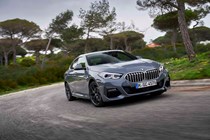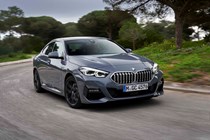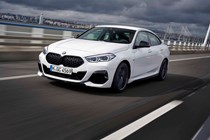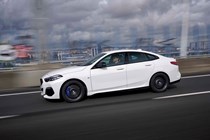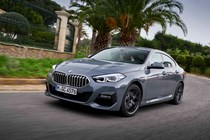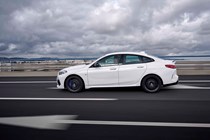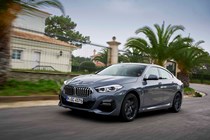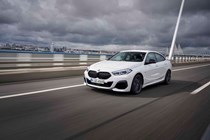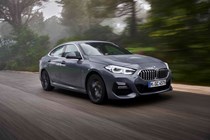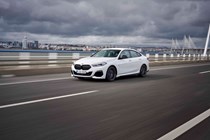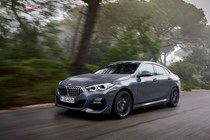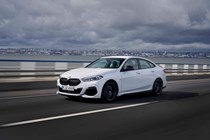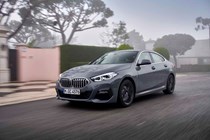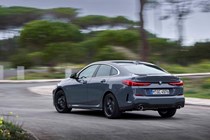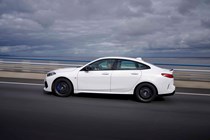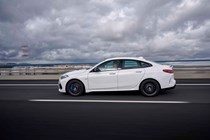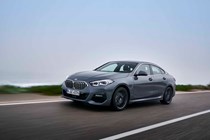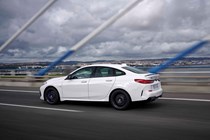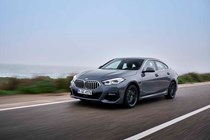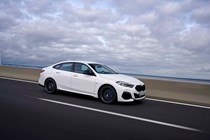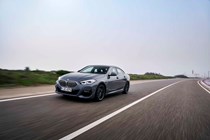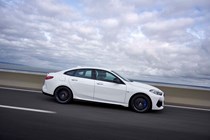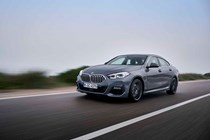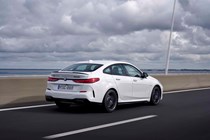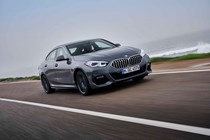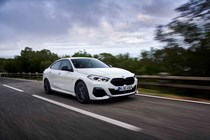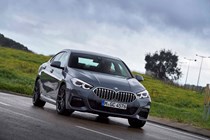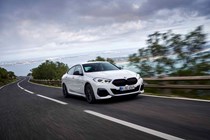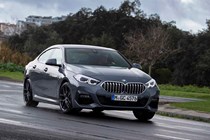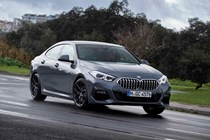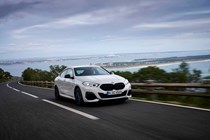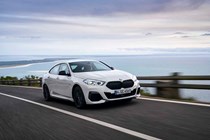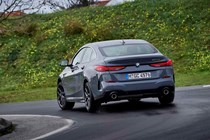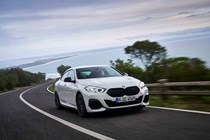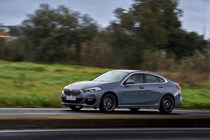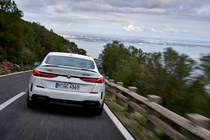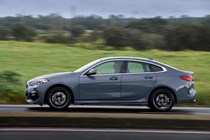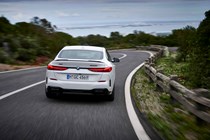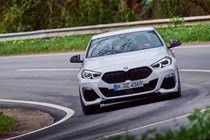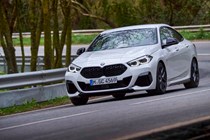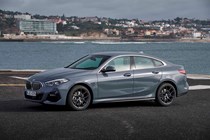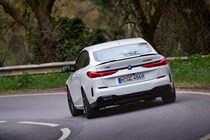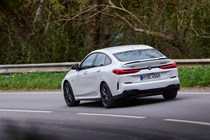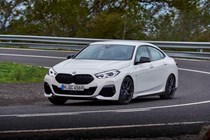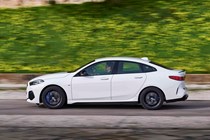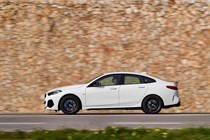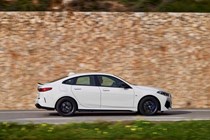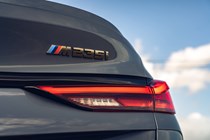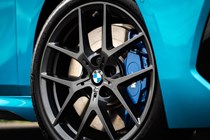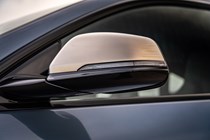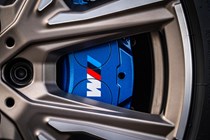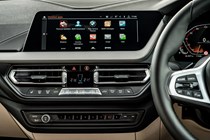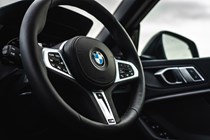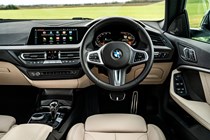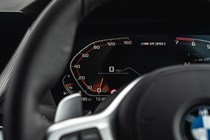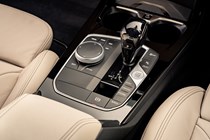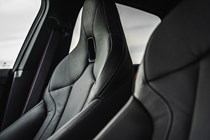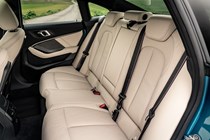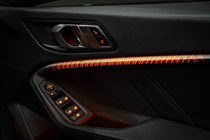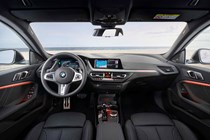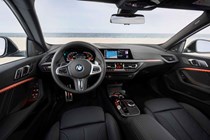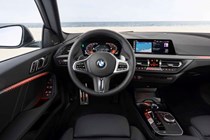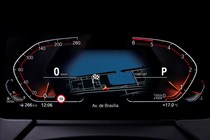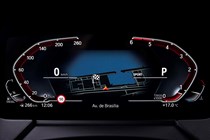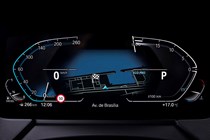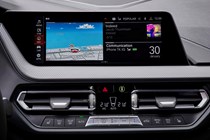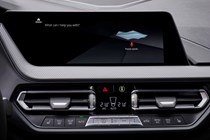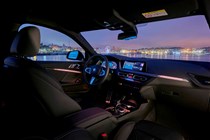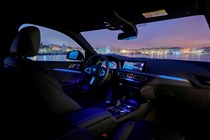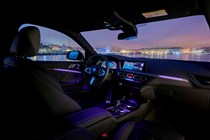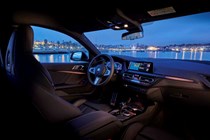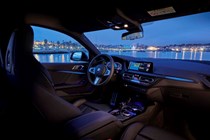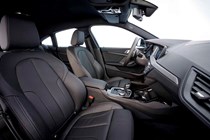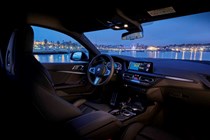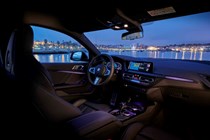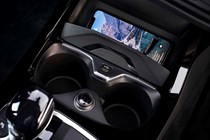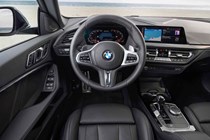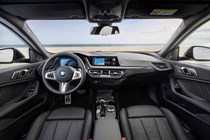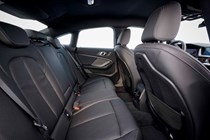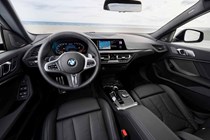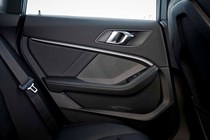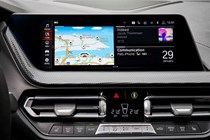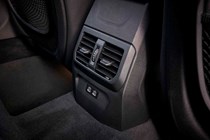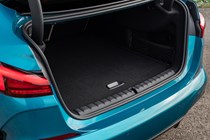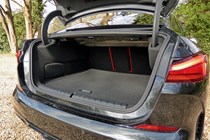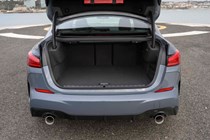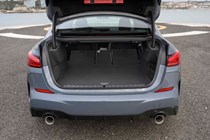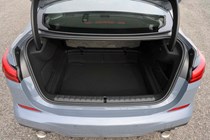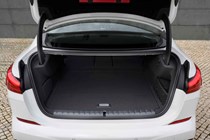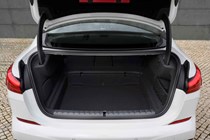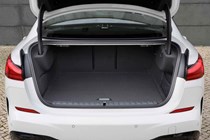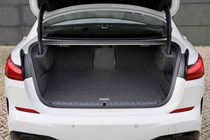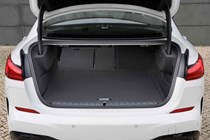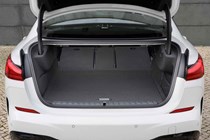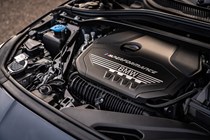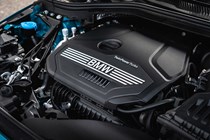
BMW 2-Series Gran Coupe (2020-2024) engines, drive and performance
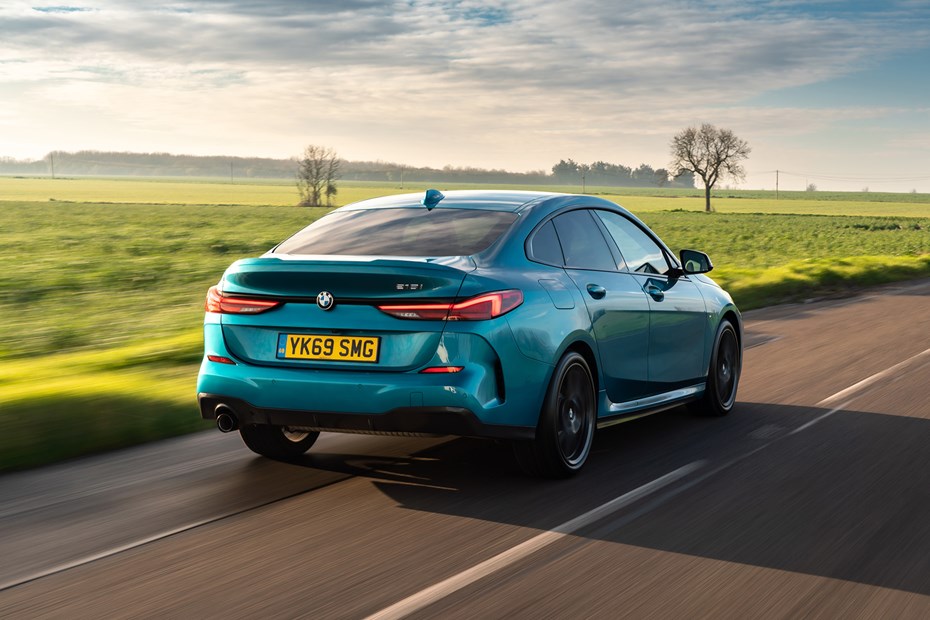
- M235i is a real rocket
- 220d is also quick
- 218i less so
Petrol engines
You have three options here. The 218i is the slowest model in the range, taking 8.7 seconds to get from 0–62mph and topping out at 134mph. It’s powered by the same 1.5-litre three-cylinder unit found in the MINI Hatch and produces 136hp and 220Nm of torque.
Above that, there’s the 220i. It has a turbocharged 2.0-litre four-cylinder petrol engine that churns out a much healthier 178hp and 280Nm of torque. BMW says that’s enough to push the Gran Coupe from 0–62mph in 7.1 seconds. We’re yet to try this unit in the 2 Series, but we’ll update you as soon as we have.
At the top of the range, there’s the M235i. It’s a very fast car, powered by another turbocharged 2.0-litre petrol engine, this time with a stonking 306hp and 450Nm of torque. It also has all-wheel-drive for extra traction – sending up to 50% of the power to the rear wheels – and gets from 0–62mph in 4.9 seconds. Top speed is electronically limited to 155mph.

BMW is very keen to point out that the M235i’s engine is the most powerful four-cylinder unit it currently makes – but we’re more impressed by the torque figure. The torque makes the M235i feel muscular at all speeds and with plenty of punch for overtaking.
The sensation is compounded by the short gearing, which helps the engine rev quicker and keep you right in the power band. That also means the top speed for each gear is quite low (so you’ll be changing gears more often), but that’s a small price to pay for the brisk acceleration.
Diesel engines
The 2 Series Gran Coupe’s diesel range is a little simpler. You have two choices, both based on the same 2.0-litre four-cylinder unit. The 218d produces 150hp and 350Nm of torque. That means it’s quicker than the cheapest petrol model, with a 0–62mph time of 8.6 seconds. However it is also around £3,000 more expensive.
The 220d is noticeably quicker than the 218d, as it develops a healthy 190hp and 400Nm of torque. BMW says that’s enough for a top speed of 146mph and a 0–62mph time of 7.5 seconds. In-gear acceleration is strong, too.
Gearbox choice
The 220i, 220d and M235i all come as standard with automatic gearboxes. The latter two options feature eight-speed units, while the 220i has a seven-speed dual-clutch automatic. The 218i and 218d are fitted with six-speed manual gearboxes as standard, although you can have an automatic as an optional extra.
The eight-speed automatic impresses in the 220d and M235i, shifting smoothly and swiftly while also making a good fist of picking the right gear at the right time when left to its own devices. These two engines also come with shift paddles on the steering wheel for you to manually select which gear to be in, which respond well.
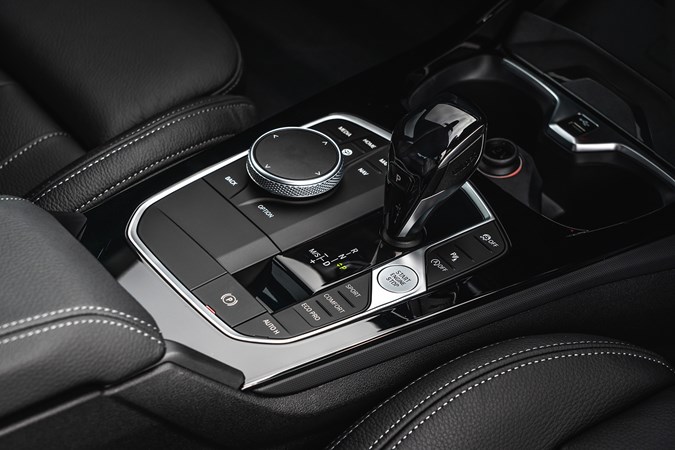
Like other BMWs, you have a choice of three drive modes called Eco Pro, Comfort and Sport. They tinker with the throttle response, automatic gearbox shift pattern and the weight of the steering to either increase or reduce the level of involvement.
What’s it like to drive?
- Excellent body control and cornering
- Responsive steering makes it fun to drive
- M235i has bags of grip
As mentioned in the Comfort section, we’ve driven M Sport models on the firmer and lower suspension setup. Ride quality takes a hit on rougher road surfaces with the setup, although it does provide fantastic body control. All versions use a sophisticated multi-link rear suspension setup which absorb mid-corner bumps without fuss or deviation.
We’re yet to drive the entry-level Sport model with its softer, standard suspension, but we doubt the added comfort will be detrimental to the Gran Coupe’s handling.
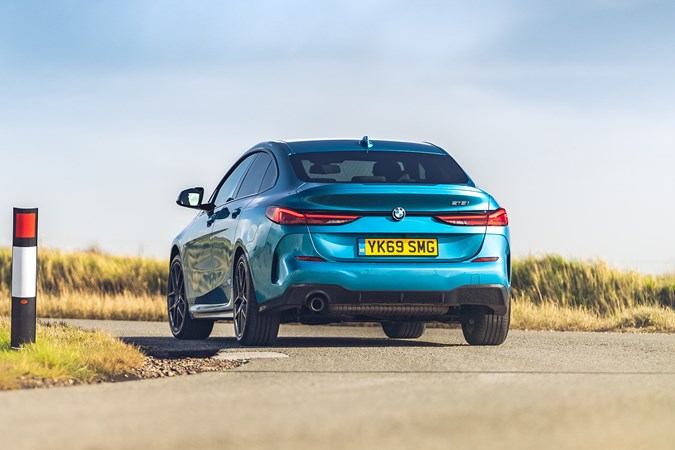
The 2 Series Gran Coupe’s steering isn’t as sharp as other BMWs but we reckon it’ll be responsive enough for most drivers – and it’s well-weighted. Body roll is very well maintained, and the Gran Coupe does feel quite nimble and light on its feet, with plenty of grip on offer.
The M235i comes with stiffer mounting points for its suspension, which reduces flex and makes it noticeably quicker in the corners. This model also comes with a limited-slip differential to aid front-end grip and it’s not too aggressive in day-to-day driving. You can occasionally notice it tugging at the steering wheel during low speed manoeuvres, but you certainly won’t have to wrestle it down your favourite country road – it still has that BMW trait of covering ground in an effortless way.
Despite this, the front tyres can lose grip and wash wide a little prematurely in the wet – and perhaps a little sooner than some would expect. But otherwise, this is an effective all-weather saloon.
However, like it’s all-wheel drive rivals, such as the Mercedes-AMG A35 and Audi S3 Saloon, it feels a little clinical. There’s little sense of grip levels through the steering wheel. As a result, the focus on grip and lack of involvement may struggle to excite certain drivers.
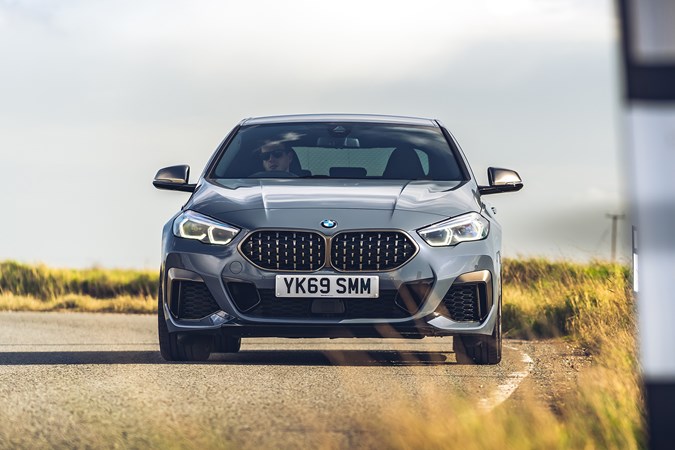
The M235i compensates for its dispassionate nature slightly with its exhaust note. It makes a great noise, from both inside the cabin and through its sporty exhaust system outside. You can hear a deep rumble from the engine inside the cabin, and while you get some artificial noise piped through the stereo speakers, they’ve at least tried to mimic a six-cylinder engine with a high pitched note. It’s largely convincing.
Outside, you can visually identify this performance model by the diamond-shaped exhaust mufflers on the rear bumper. Thankfully, while BMW has engineered a dramatic crackle when starting up the car, it’s not over-the-top elsewhere – unlike some rivals that pop, bang and whistle with every gearshift.


